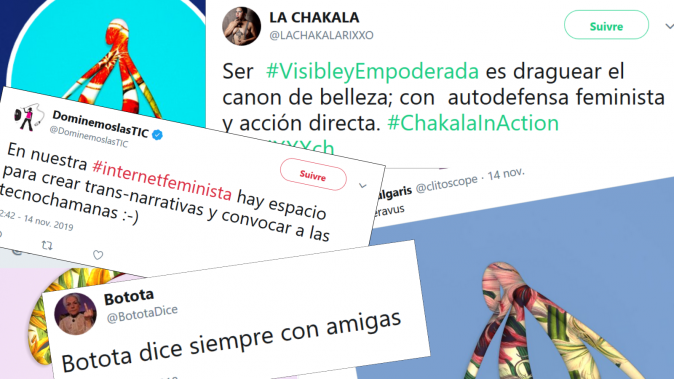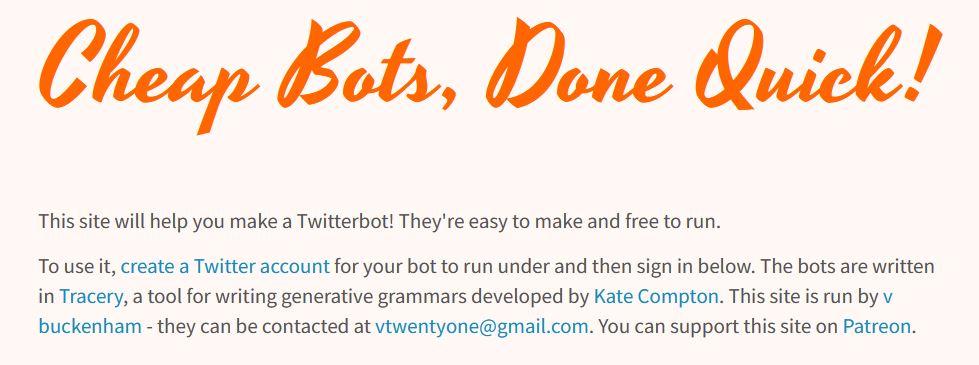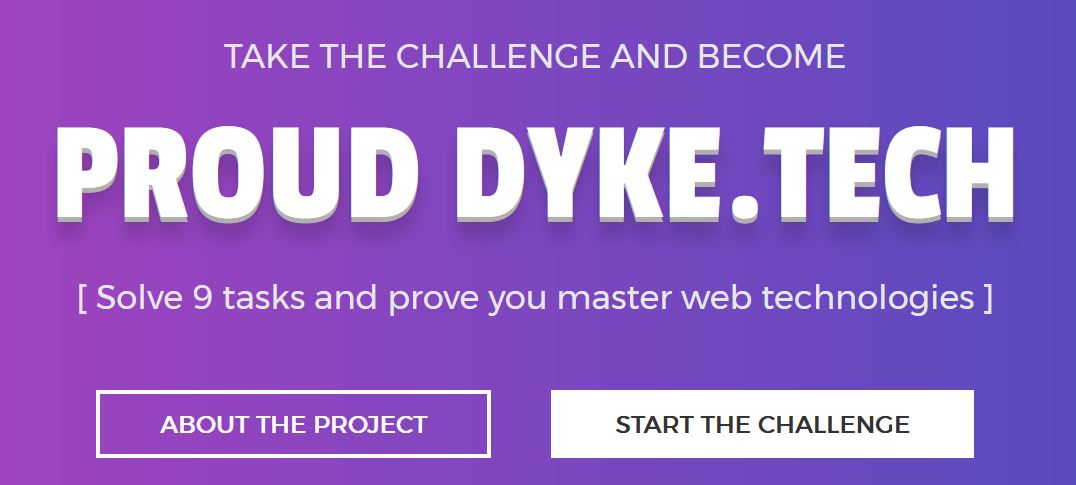Hands-on activities for subversion using technology!
Want to get down and dirty with tech? Touching, holding, pulling apart, building and using technological devices themselves can be a powerful means for exploring unknowns, taking up space and subverting using technology. The following activities can help folks gain confidence handling technology and realise their own capabilities in shaping tech!
Read on to learn about:
-
Even machines dream: Feminist robots for Twitter, by Stef from Brazil!
-
Proud Dyke.tech - a master of web technologies, by Maja from Slovenia!
Even machines dream: Feminist robots for Twitter
| Overview |
|
This activity entails making one (or many) feminist robot(s) for Twitter using generative grammar constructs.
A bot (or robot) is a computer programme that automatically performs repetitive tasks over the internet. Normally, these bots perform simple tasks. When they act together, it is often called a ‘bots farm.’ When used on Twitter, they are rarely influential, but they do help generate trending topics – the topics that Twitter considers ‘hot’ at a certain moment – or generate noise about a topic.
Making and using feminist robots on Twitter is a playful way of making feminist ‘noise’ online, and creating a feminist internet.
Generative grammar, which will be used to create our bots, is a linguistic theory that regards grammar as a system of rules. It generates exactly those combinations of words that form grammatical sentences in a given language.
Who is the activity for? |
| Getting started |
|
Materials needed:
Preparation:
|
| The activity |
|
The activity can be run either in-person or online. Make sure that participants each have the materials needed as stipulated above. Remember to set a time limit for each step of the activity.
{ "origin": ["Good day for #action# #something# with #object# #where#"] ,"action": ["explode","leave","kill","?","?","?","?"] ,"something": ["Facebook","patriarchy","the machista","?","?","?"] ,"object": ["scissors","encryption","?","?","?","?","?"] ,"where": ["in the kitchen","in the car","?","?","?"]
}
|
Proud Dyke.tech - a master of web technologies
By Maja, Slovenia (https://www.22nds.com)
| Overview |
|
Dyke‧tech is a web page where nine web development challenges are featured. They are ordered by their complexity and while participants are solving them they learn about web technologies.
Project DYKE‧tech originates from the LGBTIQ community in Slovenia. It was first presented at LGBTIQ in Tech meetup and is an English version of Lezba‧si – a lesbian who masters computer science – as defined in Slovenian LGBTQ dictionary. It is a fun way of exploring web development while being creative, exploring functionalities of web browsers and sharing tips on how to solve the challenges.
The activity has been practiced in Ljubljana, Slovenia and Berlin, Germany.
Who is this activity for? The activity is best suited for web developers or those who are curious how websites are built and already have at least a little knowledge about web development. |
| Getting started |
|
Materials needed: Laptop (not mobile phone) is needed to be able to look into source code of web pages. Preferably using Mozilla Firefox browser.
Preparation: No preparation for participants is needed. Facilitator should solve the challenges on website https://www.22nds.com/dyketech/ before the activity to be able to help participants and be familiar of concepts used in modern web development (browser, source code, design, JavaScript, RegEx, cookies, search engines, data, images). |
| The activity |
|
The facilitator should give a little intro into the activity (also available at https://www.22nds.com/dyketech/about-the-project/) and make sure all participants have web site https://www.22nds.com/dyketech/ opened in Mozilla Firefox browser.
There are several ways this activity can be run and the choice is based on the proficiency of participants’ web development skills:
1. If all participants have a lot of experience and knowledge, facilitator can block 20 minutes and let everyone start solving the challenges. After 20 minutes everybody shares their progress and if there is anybody that was unable to progress they get additional support to solve the challenge. If needed participants get another 20 minutes to tackle the challenges. Afterwards a review of all the challenges should be made and participants share how they solved it. If some challenges are still unsolved then the facilitator helps with tips (not solutions!) and motivates participants to solve the challenge together.
2. If participants are not web developers, but would like to learn about web technologies, then the challenges should be solved together by the whole group. For every challenge one of the participants is selected to read out loud the text on the web site (the tip that hints where the solution is) and think about the strategies of solving the challenge. Other participants can help and share their thoughts and possible solutions until they find the solution and all group progresses to the next challenge and ultimately solves all challenges. Facilitator should help with tips when the group gets stuck and when participants reach solution facilitator can also point out alternative ways of solving the challenge.
At the end of the activity participants and facilitator can have a discussion about which other challenges could be implemented, what they had learned and which web technology they would like to learn more about in the future. |
Taking apart your computer!
By (person), (country)
| Overview |
|
| Getting started |
|
| The activity |
|




No Comments